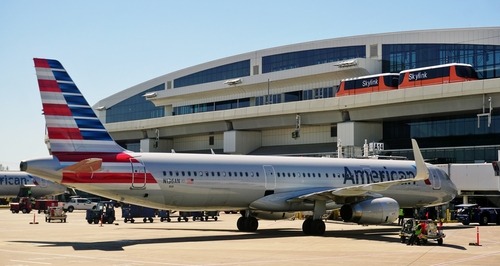
Leaders in the U.S. aviation industry said Wednesday the COVID-19 relief CARES Act went a long way towards keeping the hard-hit industry afloat but that current proposals for an infrastructure bill do not approach what will be necessary to keep airports and related facilities safe and sound for the rebounding air travel business.
“As travelers begin to return to America’s airports, one thing has not changed: our airports continue to face substantial infrastructure needs,” Danette Bewley, president and CEO of the Tucson Airport Authority, told members of the U.S. Senate Commerce, Science, and Transportation Subcommittee on Aviation Safety, Operations, and Innovation, during a hearing on Aviation Infrastructure for the 21st Century.
She referred to a 2020 study by the Airports Council International that cited $115 billion in needed airport infrastructure projects in just the next five years, “Since this survey was conducted in the middle of the pandemic last summer, it does not fully account for all the new public-health infrastructure upgrades airports need to make, such as HVAC improvements, physical distancing space near gates, and touchless technology to assist passengers through the airport,” said Bewley.
Sean Donohue, CEO of Dallas Fort Worth International Airport, told the senators the last big airport opened in the U.S. was Denver International Airport 25 years ago and that most of the industry’s infrastructure needs are to reconstruct older facilities.
The industry experts testifying Wednesday thanked Congress for the $35 million in aid provided through the CARES Act, $29 billion for passenger and cargo carriers and $10 billion in grants for airports, but made it clear the numbers being proposed during the ongoing infrastructure negotiations fall far short of what will be necessary to upgrade the nation’s airports and support systems. “COVID funding has been a godsend,” said Bewley, but added that most of those funds will go to support payrolls and other operations and not for infrastructure projects.
“Regarding the $50-plus billion pipeline of airport projects that were in the planning or concept phase before the pandemic – progress there understandably paused as airports and airlines waited to see what the post-pandemic world might look like,” said Paul Cullen, vice president for Real Estate at Southwest Airlines. “But that temporary pause is over as project teams have been reengaging, and momentum continues to pick up.”
Paul Rinaldi, president of the National Air Traffic Controllers Association, told the senators the nation’s air traffic control system is in dire need of an upgrade. “Without a stable, predictable funding stream, the FAA will be hard-pressed to maintain pre-pandemic capacity, let alone modernize the physical and technological infrastructure of the system while expanding it for new users including unmanned aircraft systems, commercial space launches, and supersonic aircraft,” he said. According to Rinaldi, the FAA’s Air Route Traffic Control Centers are almost 60 years old, and many of the towers and Terminal Radar Approach Control facilities are in desperate need of repair or replacement. Many of these facilities have exceeded their life expectancy, while others need replacement of critical physical infrastructure systems including roofs, windows, HVAC systems, elevators, and plumbing, he said.
President Biden’s infrastructure bill includes $25 billion aid for airports while a Republican proposal offers $44 billion.
Sen. Kyrsten Sinema (D-AZ), chairman of the subcommittee, conceded to many of the needs of the aviation witnesses and said the level of funding and needs for aviation are currently being hatched out in bipartisan negotiations being held by a group of 21 senators, 10 Democrats and 11 Republicans. She said the plunge in air traffic during the pandemic “set us back with efforts to address infrastructure needs.” The return of passenger traffic will provide new momentum to discussions on those needs, she added.
Several witnesses suggested alternative methods of raising infrastructure funds.
Congress should increase, but not remove, the passenger facility charge cap and index it to inflation,” recommended Dr. Benjamin Miller from the RAND Corp. “This option will improve airports’ ability to make timely and efficient capital investments to meet growing future demand while leaving in place FAA oversight of project justification and costs on passengers.” Specifically, RAND Corp. recommends that Congress raise the current passenger facility charge (PFC) cap of $4.50 to approximately $7.50 for origin passengers only; index the new PFC cap to inflation; and eliminate 100 percent of Airport Improvement Program (AIP) primary entitlements for medium- and large-hub airports that choose to raise their PFC above $4.50.”
Other proposals aired were to allow the use of tax-free municipal bonds to fund airport projects or expand the use of private activity bonds.
But Sen. Ted Cruz (R-TX) objected to any increases in passenger fees, calling them taxes. But Cruz insisted no “idea should be off the table in these discussions,” and insisted Congress needs to think of aviation needs for the next 50 years, not just the next five years.
“We strongly believe that increased taxes and fees on passengers does the most harm to price-sensitive customers and to smaller markets, such as many of the 18 new airports we have added or announced since the pandemic began,” said Southwest’s Cullen.